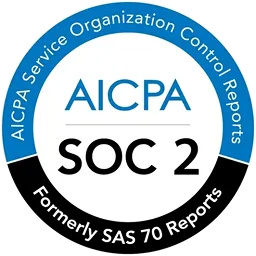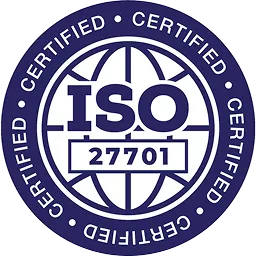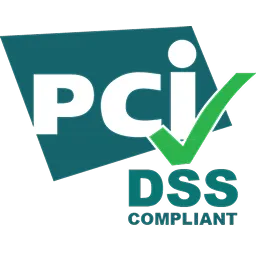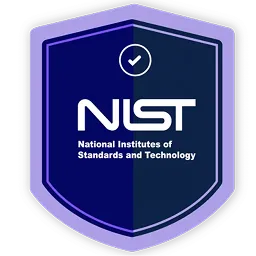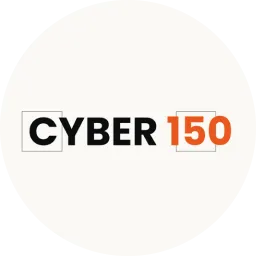Granting excessive privileges than required creates access gaps. These gaps become a prime target for unauthorized users to compromise data security. So, to prevent these access gaps, Just Enough Access emerges as a strategic measure. In this article, we'll thoroughly understand the ins and outs of this access control.
SaaS adoption and decentralization have offered several benefits. However, they have also introduced new vulnerabilities, such as access gaps, which significantly increase the risk of security breaches. So, how do we tackle this issue?
Implementing access controls like Just Enough Access is the best way to deal with such threats. This crucial measure serves as a protective barrier, shielding sensitive data from potential threats posed by hackers and unauthorized access attempts.
This was just a brief overview of what a control like Just Enough Access is capable of; however, there is more to it. Before we dive into details, let's first understand what exactly Just Enough Access is.
What is Just Enough Access?

Just Enough Access (JEA) is an access control principle in the identity and access management framework that limits users' access rights to the bare minimum. Simply put, users are granted \"just enough\" access permissions to perform their designated tasks.
By enforcing such access control, your team can ensure that each user only has the required access to applications and data, preventing potential security breaches.
But why is it important?
Importance of Just Enough Access
Previously, IT teams used to grant excessive permissions to employees, either due to oversight or for convenience (as they no-longer have to no longer have to evaluate and approve access requests).
This ineffective access management practice creates access gaps, unnecessary vulnerabilities and widens the attack surface, increasing the risk of unauthorized access and data breaches.
To address these gaps head-on, Just Enough Access strategically limits each user's access to only what is absolutely necessary for them to carry out their specific tasks.
This approach helps reduce the attack surface and prevent access gaps. So, even if an employee account is compromised, the potential damage is limited because the employee only has access to limited SaaS app data.
To help you understand better, let's take an example:
- The company's accounting team needs access to financial records stored in a secure database. Without proper access controls, if a marketing team member accidentally gains access to these records due to broad permissions, they might make changes to sensitive financial data.
This could lead to serious repercussions, such as data breaches, financial inaccuracies, or even regulatory violations.
However, with Just Enough Access (JEA) implemented, employees would only have access to the specific data and functions necessary for their role. So, in this scenario, the marketing team member wouldn't have access to the financial records, thus reducing the risk of accidental or unauthorized access and ensuring that sensitive data remains protected.
Now that you have understood the importance of just enough access, let's explore its benefits.
Benefits Of Just Enough Access

Listed below are some of the major benefits of Just Enough Access:
- Strengthens security posture: By implementing Just Enough Access, your team can significantly reduce the risk of unauthorized access to sensitive data and additional resources.
It does that by limiting access to only what is necessary for each user's role or task. This approach prevents unauthorized users from exploiting excessive privilege or compromised accounts, thereby enhancing overall security measures. - Improves efficiency: Just Enough Access Control simplifies the access management process by providing a clear framework for granting and revoking access rights based on job requirements.
By streamlining the granting and revoking of permissions, JEA enables your team to allocate resources more efficiently. This optimized resource allocation ensures that organizational assets are utilized effectively, resulting in further time and resource savings. - Increases productivity: With Just Enough Access control in place, users are provided with precisely the level of access required to perform their tasks effectively. This optimized access ensures that tasks can be completed faster and with fewer interruptions, leading to increased productivity.
- Helps adhere to compliance: Just Enough Access ensures that users are granted access solely to the data essential for their tasks, safeguarding data from breaches. This not only helps secure data but also meets data protection, a mandatory compliance requirement.
So, by fulfilling this requirement, organizations can seamlessly adhere to legal and ethical obligations and mitigate the risk of regulatory penalties and reputational harm.
However, after going through the benefits, you may have realized that it is somewhat similar to just-in-time access. Just-in-time access also provides employees with limited/restricted access to apps and data, the same as just-enough access. So, what sets them apart? How are they even different?
How Is Just In Time Different From Just Enough Access?
Just Enough Access (JEA) revolves around the principle of granting users the precise level of privileges or access required to carry out their designated tasks or functions within an organization. While access permissions are predefined based on users' roles and responsibilities, ensuring they have access to exactly what they need and nothing more.
By limiting access to the bare minimum necessary for job functions, JEA minimizes the risk of unauthorized access or misuse of resources, thereby enhancing overall security.
On the other hand, Just-in-Time (JIT) access control enables your team to grant access typically for a temporary period. JIT access control is commonly utilized when users require temporary access to resources for specific tasks or projects. This helps reduce the attack surface and mitigate security risks by limiting the duration of access.
To provide you with more clarity about their difference, let's take examples

- You have an employee who needs access to certain files on a shared drive to complete a project. Instead of granting the employee unrestricted access to the entire drive, which could potentially expose sensitive information, your team can use Just Enough Access.
With JEA, your team can grant the employee access only to the specific files and folders they need to complete their tasks. Once the project is completed, their access to those files is revoked automatically. This approach minimizes the risk of unauthorized access. - Now, consider a scenario where there is an issue/bug in ClickUp that needs to be addressed urgently. To resolve the issue, your IT team grants the on-call team temporary access to ClickUp to troubleshoot it.
Rather than providing prolonged or permanent access, which could pose a security risk if not properly managed, your team grants Just In Time access. With JIT, the on-call team is granted access only for the duration of their troubleshooting session. Once the session is over, their access is automatically revoked.
This ensures that access is granted only when needed, reducing the window of opportunity for potential security threats.
In short, Just Enough Access focuses on granting the exact level of access required for specific tasks, while Just In Time Access focuses on providing access only when needed and for the task's duration.Now, let's understand how it works and how to implement it.
How Does Just Enough Access Work?

Just Enough Access enables your team to limit users' access rights to only what is essential for them to perform their specific tasks or duties.
The just Enough Access implementation process involves a series of steps. This includes:
- Audit of Current User Permissions: This initial step involves conducting a review of existing user permissions within the organization. This audit helps identify any unnecessary or excessive access levels that may pose security risks.
- Determining Necessary Access Levels: Based on the audit findings, your teams can determine the specific access levels required for each employee to perform their tasks effectively. This involves categorizing access rights into minimal, necessary permissions.
- Creation and Enforcement of Policies: Once the necessary access levels are identified, your team can create and enforce policies to ensure that employees only have access to the resources and data required for their roles.
These policies serve as guidelines for access management and are enforced through various means, including Identity Access Management (IAM) tools and permission management software. - Utilization of Identity Access Management (IAM) Tools: IAM tools play a crucial role in enforcing access policies by controlling user authentication, authorization, and access privileges. These tools help ensure accountability and compliance with established access guidelines, particularly in larger organizations with complex user environments.
- Continuous Monitoring: Implementing JEA involves ongoing monitoring of user access and permissions to accommodate changes in roles, responsibilities, and organizational structures over time. Continuous monitoring helps detect and address any deviations from established access policies, ensuring the security and integrity of organizational data and resources.
But does it align with PoLP?
Strategic Alignment of Just Enough Access & Principle Of Least Privilege
Just Enough Access closely adheres to the principle of least privilege (PoLP), a fundamental cybersecurity concept. PoLP mandates granting users only the essential access levels required for their responsibilities and nothing more.
Similarly, JEA restricts permissions to the minimum necessary for specific tasks or roles, thereby minimizing the potential risk of unauthorized access.
But how does Just Enough Access manage permissions?
Just-Enough-Access Role In Permission Management
Just Enough Access is integral to Identity Access Management (IAM) as it ensures that users are granted only the permissions necessary to perform their tasks effectively without providing any excess permissions.
Additionally, it simplifies permission management by eliminating unnecessary privileges that would otherwise require constant monitoring or review.
Implement Just Enough Access To Limit Access To What’s Necessary
In conclusion, implementing Just Enough Access is crucial for organizations to restrict access to only what is necessary. But to successfully enforce this control, you need to have an access management platform in place. Manually managing the enforcement of Just Enough Access Control and monitoring access levels can be daunting.
So, to cut down on the tiring and error-prone process, you can consider implementing an access management solution like Zluri. It offers an access management platform that simplifies the enforcement and management of controls.
It enables your team to thoroughly implement different access controls such as PoLP, JIT, RBAC, SoD, and more, ensuring only the right users hold access to apps and restricting unauthorized ones.
By enforcing these policies, Zluri's access management minimizes surface attacks and safeguards SaaS app data.
Furthermore, with Zluri's access management, your team can even monitor whether the control has been implemented properly and is fulfilling its intended purpose. Also, your team can make changes in the controls to improve its effectiveness.
In short, with the right solution, like Zluri's access management, enforcing access controls becomes significantly easier and yields more effective results.








.png)
.svg)



